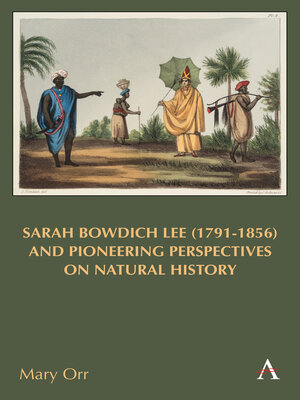Sarah Bowdich Lee (1791-1856) and Pioneering Perspectives on Natural History
ebook ∣ Anthem Studies In Travel
By Mary Orr

Sign up to save your library
With an OverDrive account, you can save your favorite libraries for at-a-glance information about availability. Find out more about OverDrive accounts.
Find this title in Libby, the library reading app by OverDrive.



Search for a digital library with this title
Title found at these libraries:
| Library Name | Distance |
|---|---|
| Loading... |
History from below uncovers overlooked protagonists contributing to (inter)national endeavour often against considerable odds. Mrs T. Edward Bowdich then Mrs R. Lee (1791–1856) is indicative. When women allegedly cannot participate in early nineteenth-century scientific exploration, discovery and publication, Sarah's multiple specialist contributions to French and British natural history have attracted no book-length study. This first appraisal of Sarah's unbroken production of discipline-changing scientific work over three decades – in modern ichthyology, in historical geography of West Africa and in the next-generational dissemination of expert scientific knowledge – does more than fill this gap. The book also pivotally investigates the intercultural, interdisciplinary and multi-genre reach of Sarah's pioneering perspectives and contributions, and how she could achieve her work independently in her own name(s) over three decades. Sarah's larger significance is then to provide a very different narrative for women at work in expert nineteenth-century natural history-making. By everywhere challenging the secondary, minor and domestic frames for women's contributions of the period, the pioneering perspectives of Sarah's story also provide alternative paradigms to the 'leaky-pipeline' modelstill informing women's careers and work in STEM(M) today.







